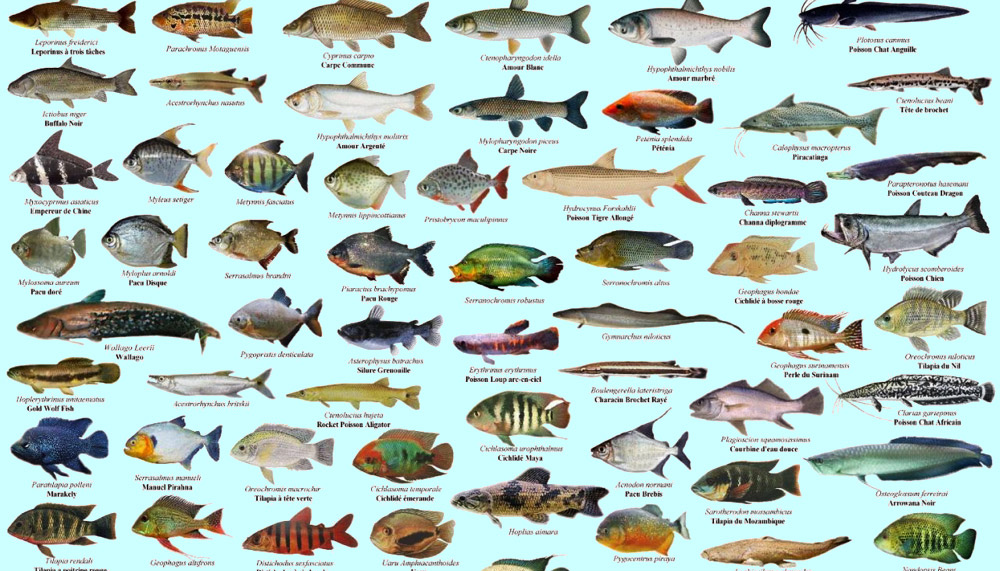
💎This is not an encyclopedia of the fishes of America. These are fish you can actually hunt with a fishing rod. All you need is a license and knowledge of fishing. The excitement and emotion of catching these fish is guaranteed.
The Ultimate Guide to America’s Most Exciting Fish for Anglers
Fishing in America offers a rich and diverse array of freshwater fish species that can provide endless hours of entertainment and challenge for anglers. Understanding the characteristics and behaviors of these popular fish species can significantly improve your chances of a successful fishing trip. This article aims to introduce you to some of America’s most sought-after freshwater fish and provide insights into their identification, habitat, and fishing techniques.
Setting the Stage: Get Ready to Meet America’s Most Popular Fish
💎Freshwater Fishing Fanfare
Largemouth Bass: The King of Freshwater Sportfish
🐟Unveiling the Largemouth Legend
Description and Identification: The largemouth bass is a robust, olive-green fish with a wide, horizontal dark stripe along its side. The distinguishing feature of largemouth bass is that the upper jaw extends beyond the rear margin of the eye.
🐟Where to Find These Freshwater Giants
Habitat and Distribution: Largemouth bass is primarily found in warm, shallow waters with abundant vegetation or other covers. They are native to North America and widely distributed across the United States, particularly in the southeastern states.
🐟Mastering the Art of Largemouth Bass Fishing
Fishing Techniques and Preferred Baits/Lures: Topwater lures, spinnerbaits, crankbaits, and soft plastic worms are all effective for catching largemouth bass. The key is to mimic the movements of their natural prey and target areas with structure or cover where bass are likely to be hiding.
Smallmouth Bass: The Bronzebacks’ Thrilling Battles
🐟Getting to Know the Feisty Smallmouth Bass
Description and Identification: The smallmouth bass has a similar appearance to the largemouth bass but with a more bronze coloration and vertical dark bars along its side. Its upper jaw does not extend beyond the rear margin of the eye, which is the main distinction from the largemouth bass.
🐟Unlocking the Secrets of Smallmouth Territory
Habitat and Distribution: Smallmouth bass prefer cooler, clearer waters than their largemouth cousins, and they are typically found in rocky areas, lakes, and rivers with fast-flowing currents. They have a wide distribution across North America but are most prevalent in the Great Lakes region and the northeastern United States.
🐟Tempting Tactics for Smallmouth Bass Fishing Success
Fishing Techniques and Preferred Baits/Lures: Effective lures for smallmouth bass include crankbaits, jerkbaits, spinnerbaits, and soft plastic baits such as grubs and tube baits. Smallmouth bass is aggressive feeders, and it’s essential to keep your lure in motion to trigger a strike.
Trouting Around: Rainbow, Brown, and Brook Trout
🐟Distinguishing Among the Three Trout Types
Description and Identification: Rainbow trout have a bright, silvery color with a distinctive pink or red stripe along their side. Brown trout are generally brownish with dark spots and reddish-orange spots surrounded by pale halos. Brook trout have dark green or brown bodies with light spots and a distinctive marbled pattern on their backs.
🐟Exploring Trout Habitats: Rivers, Lakes, and Streams
Habitat and Distribution: Trout species are generally found in cold, clear waters such as mountain streams, lakes, and rivers. Rainbow trout are native to the western United States but have been introduced to many other regions. Brown trout are native to Europe and have been successfully introduced to North America. Brook trout are native to the eastern United States and Canada.
🐟The Art of Trout Fishing: Techniques and Temptations
Fishing Techniques and Preferred Baits/Lures: Fly fishing is the most popular method for catching trout, using artificial flies that mimic insects, crustaceans, or other prey. Spin fishing with small spoons, spinners, and crankbaits can also be effective. Live bait, such as worms and minnows, may be used in some situations.
Catfishing Chronicles: Channel, Blue, and Flathead Catfish
🐟Unraveling the Mysteries of the Catfish Clan
Description and Identification: Channel catfish have a slender, grayish bodies with small, dark spots, while blue catfish are bluish-gray and lack spots. Flathead catfish are large, brownish-yellow fish with a flattened heads and protruding lower jaws.
🐟Delving into the Depths of Catfish Domains
Habitat and Distribution: Catfish species are found in various aquatic habitats, such as lakes, rivers, and ponds. Channel catfish are widespread throughout North America, while blue catfish are primarily found in the southeastern United States, and flathead catfish inhabit the central and southeastern parts of the country.
🐟Crafting the Ultimate Catfishing Strategy
Fishing Techniques and Preferred Baits/Lures: Catfish are bottom-feeders and are typically caught using live or cut bait, such as worms, shad, or other fish. Bottom rigs and slip-sinker setups work well for catfish. In some cases, artificial lures or jigs may be used, but natural bait is generally more effective.
Crappie Craze: The Tasty Quest for Black and White Crappie
🐟Comparing and Contrasting Crappie Cousins
Description and Identification: Black crappie and white crappie are both silver-colored panfish with dark speckles. The black crappie has irregular, scattered speckles, while the white crappie features vertical bands along its body. Both species have a distinctive, compressed body shape.
🐟Scouting the Crappie’s Preferred Hideouts
Habitat and Distribution: Crappies are found in various freshwater habitats, including lakes, ponds, and slow-moving rivers. They prefer areas with submerged structures, such as fallen trees, weed beds, or docks. Black and white crappie have a broad distribution across the United States, with black crappie being more common in the eastern states and white crappie in the central and southern regions.
🐟Tips and Tricks for Crappie Fishing Glory
Fishing Techniques and Preferred Baits/Lures: Crappies can be caught using live bait, such as minnows, worms, or small insects, as well as artificial lures like small jigs, spinners, or soft plastics. Crappies are schooling fish, so locating a school can lead to an action-packed day of fishing.
In conclusion, understanding the various freshwater fish species found in America and their characteristics, habitat preferences, and effective fishing techniques will greatly enhance your angling experience. America’s freshwater fishery offers a wide array of opportunities for anglers to explore and enjoy.
💎Saltwater Fishing Spectacular
Striped Bass: Saltwater Royalty and Epic Battles
🐟Introducing the Esteemed Striped Bass
Description and Identification: Striped bass, also known as striper, is a large, predatory fish with a streamlined body and distinct horizontal dark stripes along its silver-gray sides. They have a spiny dorsal fin and a forked tail.
🐟Traversing the Striped Bass Domain
Habitat and Distribution: Striped bass is found along the Atlantic coast of North America, from Canada to the Gulf of Mexico. They inhabit coastal waters, estuaries, and large rivers. Stripers are anadromous, meaning they migrate between saltwater and freshwater to spawn.
🐟Secrets to Conquering the Striped Bass Challenge
Fishing Techniques and Preferred Baits/Lures: Striped bass can be caught using a variety of techniques, including surf casting, trolling, and fly fishing. They are known to feed on a wide range of baitfish, so using live or cut bait such as herring, bunker, or eels can be effective. Artificial lures like plugs, swimbaits, and jigs can also be successful.
Redfish Rumble: The Fiery Pursuit of Red Drum
🐟Encountering the Bold and Beautiful Redfish
Description and Identification: Redfish, also known as red drum, is a robust, reddish-bronze fish with a dark spot near the base of its tail. They have a sloping forehead, a downward-pointing mouth, and a distinct black lateral line along their body.
🐟Discovering the Redfish’s Coastal Playground
Habitat and Distribution: Redfish are found in the Atlantic and Gulf of Mexico coastal waters, from Massachusetts to Texas. They inhabit shallow coastal waters, estuaries, and marshes.
🐟Expert Techniques for Redfish Fishing Success
Fishing Techniques and Preferred Baits/Lures: Redfish can be caught using live or cut bait, such as shrimp, crabs, or mullet, as well as artificial lures like spoons, soft plastics, and topwater plugs. Sight casting, wade fishing, and drift fishing are popular techniques for targeting redfish.
Flounder Frenzy: Camouflage and Flatfish Thrills
🐟Decoding the Intriguing World of Flounder
Description and Identification: Flounders are flat, bottom-dwelling fish with both eyes on one side of their head. They have a distinct, oval-shaped body and a large, toothed mouth. Flounders can change their coloration to blend in with the seafloor, making them excellent ambush predators.
🐟Navigating the Flounder’s Submerged Haunts
Habitat and Distribution: Flounder inhabit coastal waters and estuaries along the Atlantic and Gulf coasts of the United States. They are typically found on sandy or muddy bottoms near structures, such as jetties, piers, and artificial reefs.
🐟The Flounder Fishing Formula: Tips for Catching Flatfish
Fishing Techniques and Preferred Baits/Lures: Flounder can be caught using live or cut bait, like shrimp, minnows, or squid. Jigging with soft plastic lures or bucktail jigs tipped with bait can also be effective. Fishing on the bottom or slowly dragging baits across the seafloor are popular techniques for targeting flounder.
Tarpon Titans: The Silver Kings of Saltwater Fishing
🐟Marveling at the Majestic Tarpon
Description and Identification: Tarpons are large, silver fish with thick, elongated bodies and large, upturned mouths. They have a distinct dorsal fin and large scales. Tarpons are known for their spectacular leaps and acrobatic displays when hooked.
🐟Venturing into the Turf of Tarpon
Habitat and Distribution: Tarpons are found in the warmer coastal waters of the Atlantic Ocean, the Gulf of Mexico, and the Caribbean. They inhabit shallow coastal waters, estuaries, and mangroves, often venturing into freshwater rivers.
🐟Essential Skills for Tackling Tarpon Triumph
Fishing Techniques and Preferred Baits/Lures: Tarpons can be caught using live or dead bait, such as mullet, crabs, or shrimp. Fly fishing with large streamers or casting artificial lures, like plugs and soft plastics, can also be effective. Tarpon fishing often involves sight casting and battling these powerful fish on light tackle.
Mahi-Mahi Mania: The Vivid World of Dolphin Fish
🐟Meeting the Dazzling Mahi-Mahi
Description and Identification: Mahi-mahi, also known as dolphin fish or dorado, are vibrantly colored fish with an elongated, streamlined bodies. They have a blunt, rounded head, a large dorsal fin that extends along their back, and a forked tail. Their coloration can vary from bright green and blue to gold and silver, often changing rapidly when excited or stressed.
🐟Chasing Mahi-Mahi in their Bluewater Home
Habitat and Distribution: Mahi-mahi is found in the warm, tropical, and subtropical waters of the Atlantic, Pacific, and Indian Oceans. They are a pelagic species, often found near floating debris, seaweed, or other structure in the open ocean.
🐟The Mahi-Mahi Fishing Method: Hooking the Vibrant Prizes
Fishing Techniques and Preferred Baits/Lures: Mahi-mahi can be caught using a variety of techniques, including trolling, casting, and live baiting. They are attracted to various baitfish and squid, so using live or cut bait, such as ballyhoo, mullet, or squid, can be effective. Artificial lures like plugs, poppers, and skirted trolling lures can also be successful. Mahi-mahi is known for their acrobatic leaps and aggressive strikes, making them a popular target for sports anglers.
Let’s Go Fishing in the USA

America is a country of endless possibilities, including for fishermen. There are almost endless fishing spots in the United States. Fishing areas extend over more than 10 million square kilometers of land. Alaska, Montana, Idaho, Wyoming, Florida, California, and many other lakes in the northeast are especially suitable. Here you will find detailed information on fishing opportunities in the United States, what types of fish can be caught in America, and the required permits.
Americans are crazy about fishing. No wonder there are about 46 million fishermen in the United States. For many, this is more than just a welcome activity. Fishing is a special challenge for American anglers, where the main thing is to be the best.
Americans love the competitive spirit and organize fishing events such as the famous Bass Masters. To hunt the largest black bass every year, anglers first have to go through countless preliminary decisions. Only the most resilient have a chance to win, which earns them millions of dollars in prizes and succulent sponsorship deals.
Keep reading my article to find out more about fishing in this country!
Types Of Fish Commonly Caught in America
In this section, I will tell you about 6 types of fish that you can most often catch in America. Let’s find out more about them.
Sunfish
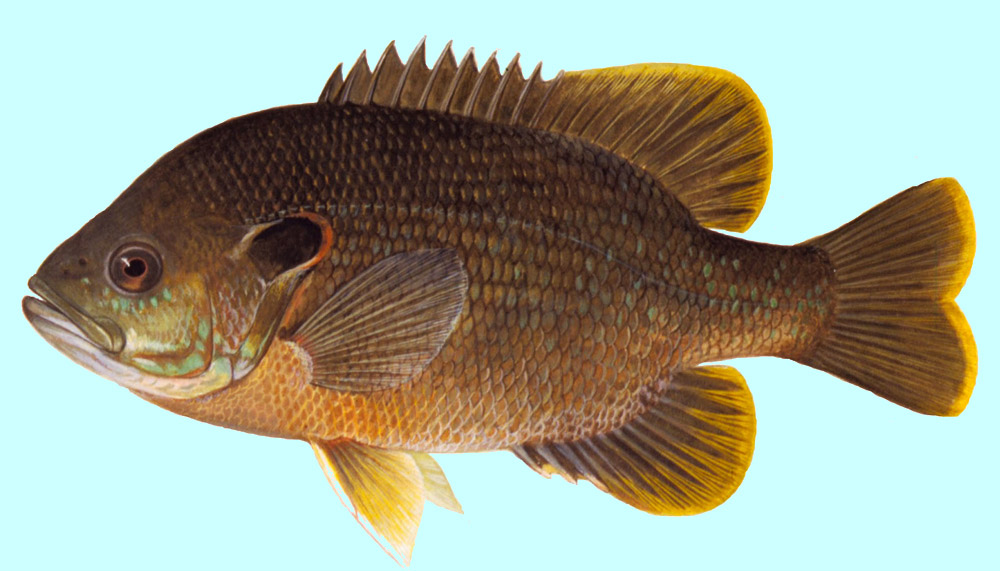
This species belongs to the Centrarchidae family. Sunfish is a North American freshwater fish. This fish responds well to bait so you will not have any difficulties when fishing. You can even do this with your children. This fish can be small or large. Its size varies from 2.5 centimeters to 80 centimeters.
This species prefers warm and shallow water, clear and with dense vegetation. These can be small lakes, bays of large lakes, ponds, rivers with a slight current. It feeds mainly on aquatic insects, small fry, worms, and mollusks. It can feed both from the surface, from the bottom, and in the water column.
Crappie
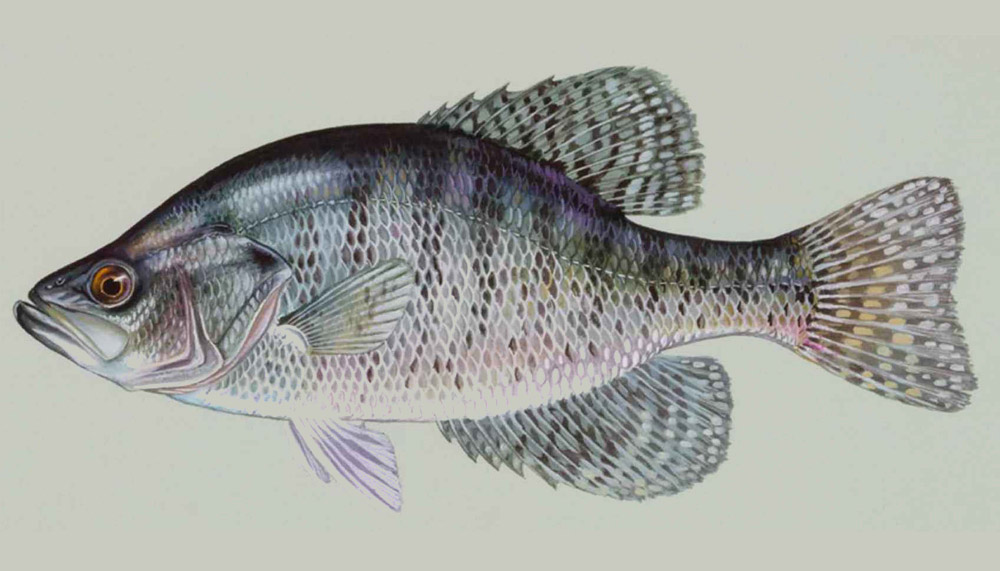
This species also belongs to the Centrarchidae family. From my own experience, I can say that this is one of the most delicious freshwater fish. You can catch this fish in temperate waters from spring to early summer. For this fish, I recommend using small jigs as well as minnows.
Walleye

Walleye is a species of fish from the genus Zander of the Perch family. The peculiarity of Walleye is that with age, his body becomes more compressed from the sides. The side color can range from olive-brown to golden brown and even yellow. This fish is also distinguished by sharp eyesight.
She sees perfectly even in poor lighting conditions. Because of this feature, the best time to fish is dawn, as well as twilight and cloudy days. If you have never caught this fish, then it is better to start doing it in spring or autumn. It is during this period that the fish are most active and willingly bite your bait. But already in the summer, the fish are becoming pickier and fishing will be more intense.
Northern Pike
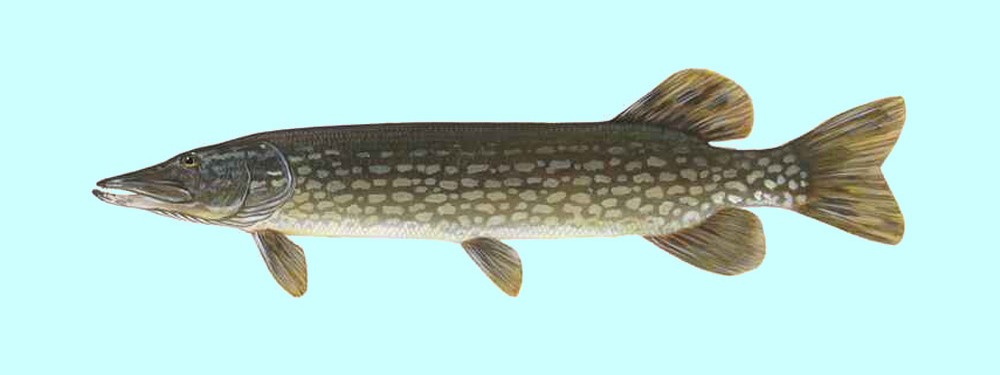
It is a fairly large fish with an average length of 24-30 inches. The body color of a pike is highly dependent on its habitat. The back is dark, closer to black. The sides are much lighter in color with small spots of olive color. A pike living at depth has a darker body color than a fish living in shallow water. The northern pike lives in the waters of northern Europe, Asia, and America.
Bass
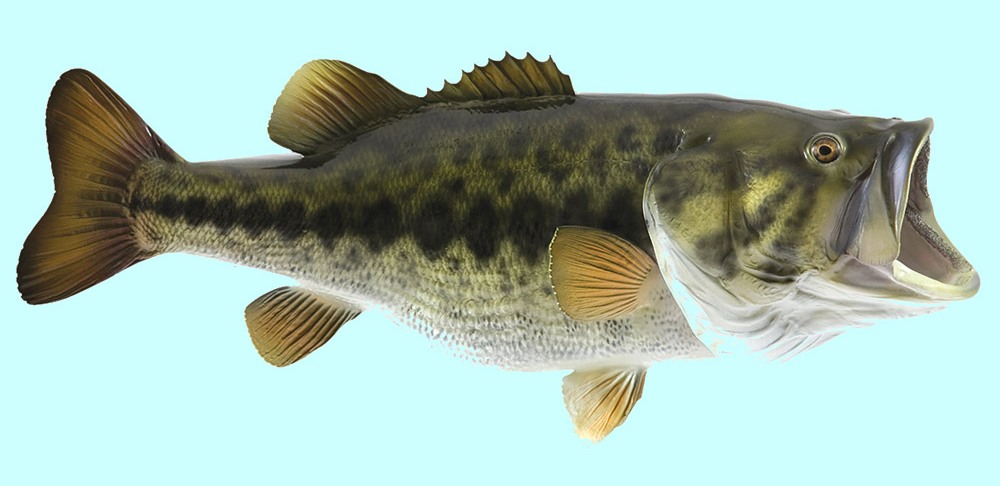
It is one of the most popular fish species in North America. The predator gets along well in freshwater lakes and rivers. Bass chooses places with clear water and little current. The predator finds its food in benthic vegetation. It feeds on small fish and larvae of various insects. Adults eat mollusks, crayfish, frogs, and snakes.
The largest fish can eat small alligators and birds, as well as rodents that are in the water. The fish has an elongated and compressed body on both sides, which tapers closer to the tail. The sides have a greenish tint with dark spots, from which a horizontal stripe is formed, which has not ideally even outlines. The fin, which is located on the back, is divided by a deep groove into two parts equal in length, and a small depression is visible on the caudal.
Catfish
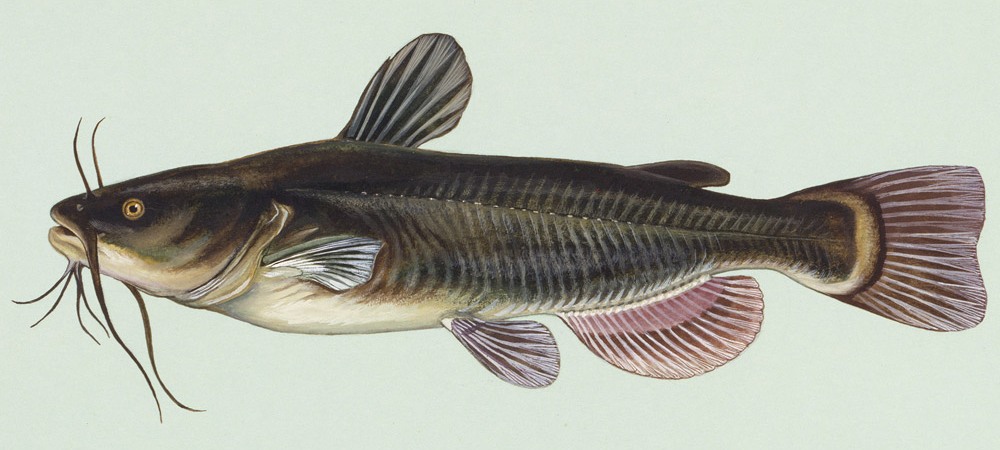
Catfish are large predator that lives in freshwater reservoirs. Its weight can reach 400 kg, and its length is 3 meters. The color of the fish is brown with brownish-green blotches. The abdomen is white. The tone depends on the habitat and can vary from yellow to black, sometimes albinos are found. The inhabitant has no adipose fin, and the tail fin is rather short.
The body of an individual is covered with mucus and does not have scales. A distinctive characteristic of the appearance is a huge mouth, from which two large mustaches extend, on the chin, there are 2 more pairs, shorter ones. The tail is not typical for fish, it is long and slightly flattened from the sides. Catfish lives during their entire existence in one place, except for the spawning period. He selects deep holes close to riverbeds and reservoirs. This species feeds on crayfish, mollusks, frogs, birds floating on the water, small animals that cross the reservoir. Catfish do not disdain meat from dead animals.
Fishing On The Alligator Gar
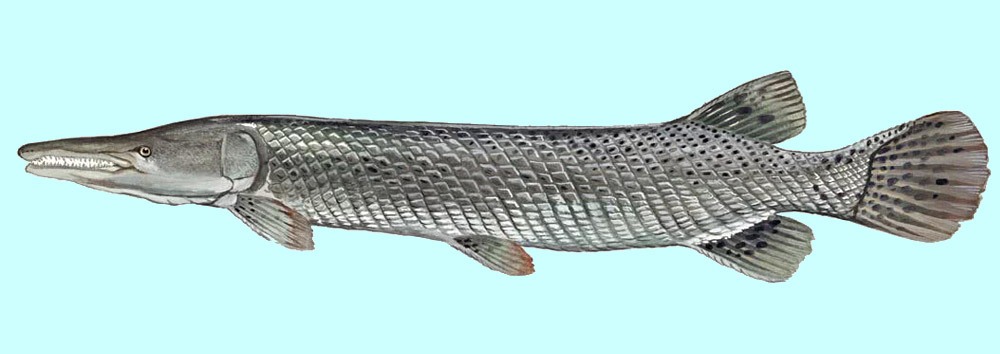
Alligator gar hunting has been and remains a very special freshwater fishing experience in the United States. The legendary animal is one of the last primitive giants on earth. You can find this species in Texas. Large specimens weigh up to 300 pounds. In any case, catching a 100-kilogram animal is almost normal. With this size, hunting the alligator gar is an unforgettable adventure.
Since the primitive giants have disappeared from many bodies of water over the past few decades, measures are repeatedly taken on numerous rivers in the southeast of the country to increase the population of this species. The alligator gar is usually used for fishing with floats and bait. A particularly bite-resistant fishing line is used, which cannot be separated as quickly by the sharp teeth of the fish as razor-sharp.
American eel
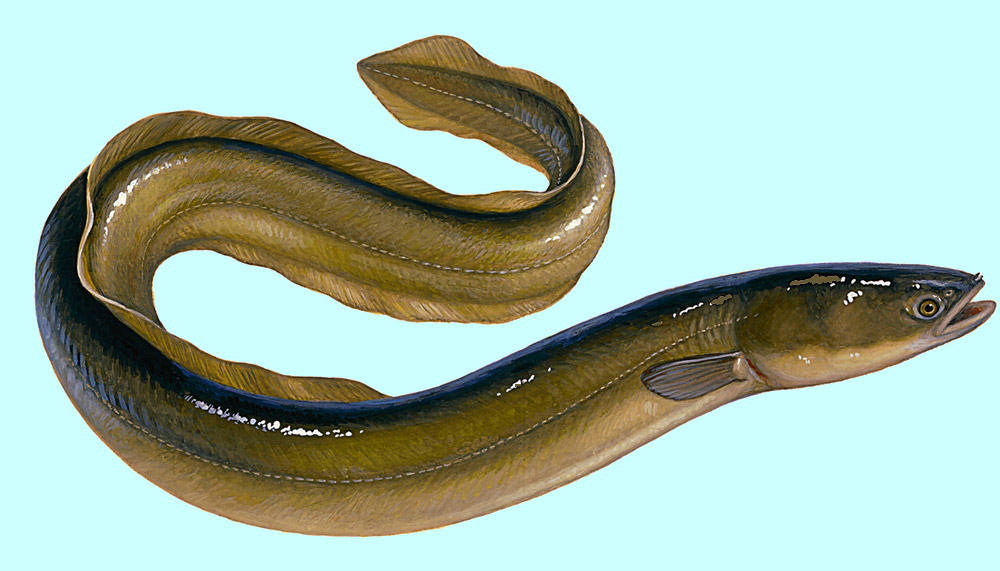
American eel lives in the continental waters of the western side of the Atlantic Ocean. Nocturnal predator, feeding on the bottom. The diet varies depending on the geography of the range, the season, and the age of the fish. Eel is nocturnal. During the day, it hides in crevices or other shelters. It spawns in the Sargasso Sea and grows and matures in freshwater. The body of the fish is long, flexible, snake-like.
The head is small, the eyes are large. The lower jaw protrudes slightly forward, the lips are thick. The mouth is large with sharp teeth located on the jaws and palate, the tongue is absent. The mustache is missing. The pelvic fins are absent. The body is covered with a thick layer of mucus, so it is extremely difficult to hold the eel with bare hands.
Large individuals can bite. It can breathe through the skin, so it can live for several hours without water. The American eel lives in deep (up to 460 m) freshwater bodies such as lakes and reservoirs, large rivers with silt bottom and strong currents, in coastal sea waters. The fish eats aquatic insects and their larvae, small crustaceans and bivalve mollusks, live and dead fish, worms, and frogs. If the eel is very hungry, it can attack even juveniles of its own kind.
Sea Fishing On The US East Coast
The US East Coast is ideal for deep-sea fishing. With a boat, he goes to the Gulf of Mexico. There are many species of fish such as sharks, perches, or large marine groupers. Barracuda, mackerel, and tarpon have also been hooked on multiple occasions in the Gulf of Mexico. Fishing is carried out at the bottom or with a turn signal close to the surface.
If you don’t want to go too far in the Gulf of Mexico, the legendary Florida Keys are for you. Coastal fishing is a popular sport here. Small and large passages between islands off the coast of Florida are especially lucrative for fishing. These passages are called inlets. The waters behind them are home to large perches and sea bream. They can be caught from numerous bridges and even from land. One of the islands, Islamorada, attracts so many anglers that it is considered the world capital of sport fishing.
Sea fishing On The West Coast Of The USA
The west coast of the United States is also known worldwide for its abundance of fish. Yellowfin tuna is a popular target fish. Fishermen chase him on guided fishing tours in large boats. They can accommodate up to 20 people and are equipped with the latest technology.
The captain tracks down tuna with a sonar. Then he lays out a chum line that attracts the fish and pushes them towards the anglers. The largest specimens weigh up to 215 pounds. Tuna weighing around 100 pounds is also not uncommon. The best time for yellowfin tuna is spring. Albacore can also be caught during this period. The season for bluefin tuna begins in summer. The best time to catch wahoo is autumn and winter.
Freshwater Fishing In The USA
Perhaps the most famous freshwater fishing spots in the United States are the five Great Lakes in the north of the country: Lake Erie, Lake Huron, Lake Michigan, Lake Superior, and Lake Ontario. In the largest connected freshwater lakes on earth, it is not only the famous black perch that is caught.
Professional and amateur anglers regularly catch salmon, American zander, burbot, and brown trout here. Often, a carp or a Ceylon snakehead is pulled out of the water. In huge freshwater lakes, you can even catch a rather rare catfish, which can grow up to a meter.
USA Fishing Permit
Anyone who wants to fish in the US must have a fishing license. You must have it before you go on your first fishing trip. Such a license is required in every state in the United States. But don’t be alarmed. The license is quite easy to obtain and it costs relatively little money.
It doesn’t matter if you fish on land or from a boat, you must have a license. All the money received from the sale of licenses goes to preservation and restoration. You can find out directly what the money received from the purchase of your license is spent on in the US Fish & Wildlife Service.
Responsible Angling: Conservation and Ethics
Catch-and-Release: The Path to Sustainable Fishing
Catch-and-release is a vital practice for the conservation of fish populations and the overall health of aquatic ecosystems. By releasing fish back into their environment, anglers contribute to the sustainability of the species and the preservation of the recreational fishing opportunities for future generations. When practicing catch-and-release, it is essential to handle fish with care, minimize their time out of the water, and use proper release techniques to ensure their survival and well-being.
Playing by the Rules: Size and Bag Limit Basics
Size and bag limits are established by fisheries management agencies to protect fish stocks from overexploitation and ensure their long-term sustainability. Size limits are determined to allow fish to reach maturity and spawn before being harvested, while bag limits regulate the number of fish an angler can keep in a day. By adhering to these regulations, anglers play a crucial role in maintaining the balance of the fish populations and promoting the health of the ecosystem.
Honor the Seasons: Adapting to Local Regulations
Local regulations and fishing seasons are put in place to protect specific fish species during their vulnerable life stages, such as spawning or migration periods. Respecting these rules helps ensure the successful reproduction and survival of the fish populations. In addition, some areas may have specific regulations related to gear restrictions, bait usage, or access to certain bodies of water. It is the responsibility of every angler to familiarize themselves with and adhere to local regulations, contributing to the conservation and sustainability of the fishing resources for the enjoyment of all.
FAQ
Conclusion
In this article, we have explored the fascinating world of angling in America by introducing the top freshwater and saltwater fish species that make this sport so captivating. From the spirited battles with Largemouth Bass and Smallmouth Bass to the adrenaline-pumping encounters with Tarpon and Mahi-Mahi, there is no shortage of excitement for anglers in pursuit of these diverse and thrilling fish species.
We encourage you to step out of your comfort zone and experiment with different species, habitats, and fishing techniques, as each offers a unique set of challenges and rewards. By diversifying your angling experiences, you will not only expand your skills and knowledge but also develop a deeper appreciation for the incredible array of fish that inhabit America’s waters.
Lastly, we cannot overemphasize the importance of conservation and ethical fishing practices. As stewards of our aquatic resources, it is our responsibility to protect and preserve these ecosystems for future generations. By practicing catch-and-release, adhering to size and bag limits, and respecting local regulations and fishing seasons, we can all play our part in ensuring the sustainability of our fisheries and the continued enjoyment of angling in America.
Fishing is a really popular sport in the United States. Fishing in America is very diverse. Different fish are found in different parts of the country. Therefore, anglers have a wide choice where they can apply all their knowledge and get an unforgettable experience.
There are a lot of places in the USA where you can go fishing and relax at the same time, there are such places in literally every state. I hope that through this article you have learned more about what kind of fish can be found in the waters of America, as well as learned more about how to get a fishing permit.
Tags: #types of fish commonly caught / #fish species / #freshwater fish of america / #explore fish species / #how to choose a hook for saltwater fishing / #freshwater game fish species / #top ten fish to catch in north america / #types of fishing in the usa / #most popular gamefish in america

I live in Tenerife (Canary Islands) for the last 10+ years and share my daily fishing experiences on my website. Many years of personal experience as a fisherman and the vast experience of my friends allow me to write professionally on any fishing topics (from choosing a flashlight and equipment to deep-sea fishing).
All of my advice is based on practical real-world experience and will be useful to both novice anglers and professionals. Read more about the author.
Affiliate Disclosure: FishReeler.org sometimes gets paid for listings, through sponsors or affiliate programs like Amazon, Ebay, Cabelas, Bass Pro Shop, Shimano, Daiwa, Rapala, Renn, Okuma, KastKing, etс. Clicking a link helps keep FishReeler.org free, at no extra cost to you!
About the author: Each article is verified by the fishing expert Sergio Smirnoff. The articles are written by professional and amateur fishermen with 20+ years of fishing experience.
Note: The views and opinions expressed in this article are those of the authors and do not necessarily reflect the official policy or position of any agency. The articles are for informational purposes only, share your opinions in the comments and join the fishing discussions, let's share our fishing experiences together!

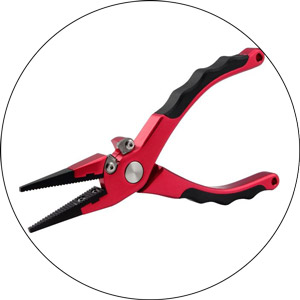
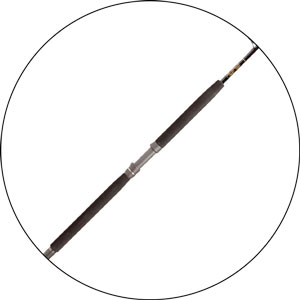
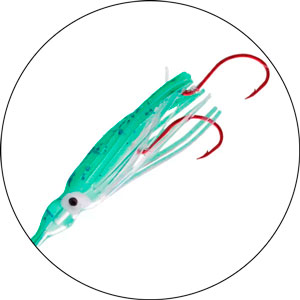
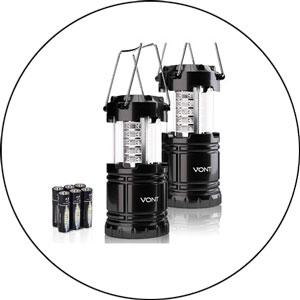
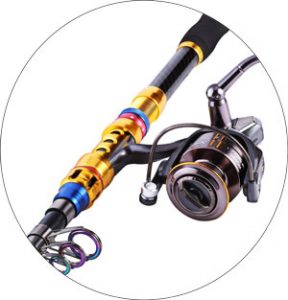
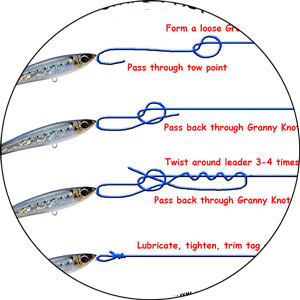
Thanks for the info. You’ve collected all the major commercial fish for rod fishing. The description is quality. Gives a complete idea of what to catch.
The list is far from extensive. Just the basic fish. Keep adding to it. Write more texts and preferably publish personal photos of your trophies.
Excellent article! I appreciate the detailed breakdown of both freshwater and saltwater species. It’s a great resource for both beginners and experienced anglers. Thanks for sharing this valuable information!
What a fantastic and comprehensive guide to the most popular fish species in America! I especially enjoyed the sections on habitat and distribution, which will definitely help me plan my future fishing trips. Keep up the great work!
This article was incredibly informative and well-written. I’ve been fishing for years, but I still learned a lot from it. I particularly liked the emphasis on conservation and ethical fishing practices. We all have a role to play in preserving our fisheries, and it’s essential to remind ourselves of that. Thanks for the insightful read!
Great article! The detailed information on different fish species, along with their preferred baits and lures, has been immensely helpful in expanding my fishing knowledge. I appreciate the inclusion of both freshwater and saltwater species, as it caters to anglers with varied interests. Keep up the fantastic work, and I look forward to more insightful articles from fishreeler.org.
As a novice angler, I found this article to be a treasure trove of useful information. The breakdown of different fish species and their respective fishing techniques have given me the confidence to try new methods on my next fishing trip. I can’t wait to put this knowledge into practice!
I totally agree that Florida is a top fishing destination. The state boasts an incredible variety of fishing opportunities, from freshwater species like largemouth bass, peacock bass, snakehead, and many exotic species, to both inshore and offshore saltwater fishing. Plus, the year-round warm weather makes it possible to enjoy fishing anytime you want. It’s truly an angler’s paradise!
Absolutely, South Florida is a fantastic choice for fishing enthusiasts. With freshwater options like lakes, ponds, and canals, as well as saltwater choices such as rivers, backcountry, the Atlantic Ocean, and the Gulf of Mexico, there is a seemingly endless variety of species to target. There’s definitely something for every angler to enjoy in this region!
Florida certainly offers a longer fishing season throughout the year. Having lived in North Carolina for 30 years and experiencing its great fishing, it’s worth noting that it tends to be more seasonal for different species. Florida, on the other hand, provides a longer season and a wider variety of species, both in fresh and saltwater. However, be prepared for hotter summers and encounters with snakes and gators. One should also consider that inlets in Florida tend to be better maintained than in NC, making it easier to get out into the ocean.
Ultimately, the choice of location depends on what type of fishing one is interested in. For instance, if you’re after salmonids or smallmouth bass, Florida and the Gulf Coast might not be ideal. It’s essential to determine the target species before choosing a fishing spot. And remember, if you’re looking for redfish, locations like Missouri and Tennessee might not be the best choice either.
I agree that Florida is an incredible destination for fishing enthusiasts. The culture surrounding fishing near the coast is truly unparalleled. With a vast number of options for land-based ocean fishing, such as piers and causeways, Florida offers more opportunities than any other state. Additionally, having access to both the Gulf of Mexico and the open ocean provides a diverse range of fishing experiences. Not to mention, there’s no shortage of fantastic spots to launch boats from, making Florida a tough place to beat when it comes to fishing.
It’s great to hear that you have discovered some hidden gems for fishing in Indiana, especially on private property where sizable 12-inch red-ear bluegill can be caught. It’s interesting to note that the old guy who used to catch all of his food from one spot has ceased doing so, possibly contributing to the abundance.
Also, finding lesser-known lakes can yield surprising results, as evidenced by your experience at a 500-acre lake in northern Wisconsin. The local anglers’ disbelief at your catch further highlights how these off-the-beaten-path locations can truly offer fantastic fishing opportunities.
It’s exciting to learn about your favorite fishing experience in Michigan, which is salmon fishing on the Betsie River near Frankfort. Landing a 28-pound salmon that’s just under 31 inches long is quite impressive! The adrenaline rush that comes with the fish hitting the bait and causing the drag to burn up before slowing down is an exhilarating experience. Even on prime fishing days in early autumn, when anglers stand shoulder to shoulder along the river, it’s still possible to reach the limit of 5 salmon. This thrilling adventure is definitely worth trying for anyone who hasn’t experienced it before, and it comes highly recommended.